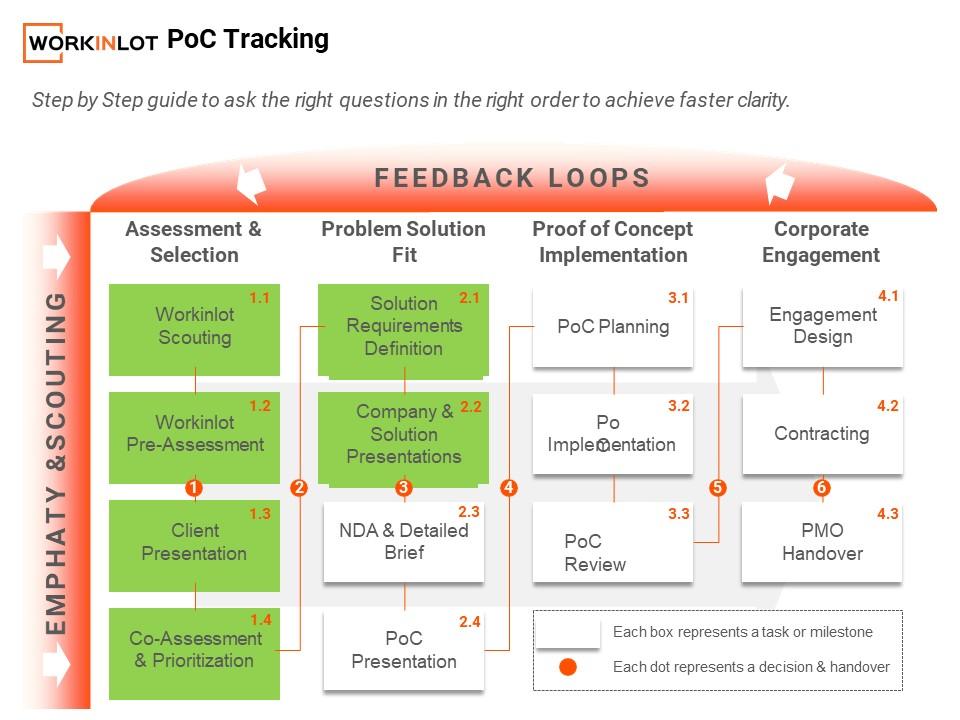
Cover photo by Helen Alp
Data holds immense potential for businesses.
In the era of AI, extracting insights from data is crucial for business success.
This article will focus on corporate innovation data, which we specialize in. Our focus has always been on the valuable data generated during corporate innovation processes. Tracking the blueprint of external and internal innovation stakeholders(startups, technology producers, academics, consultants, experts, business units, etc.) is essential for business intelligence. (PoC Data and Business Intelligence)
Research shows that companies fail to utilize most of the data they acquire.
According to the Gartner definition, dark data refers to information assets that companies collect, process, and store in the course of regular business activities, but often do not use for purposes such as analysis, business relationships, and revenue generation.
Before exploring the pitfalls of underutilizing corporate innovation data, let's understand how companies value their data and how losses can be addressed and turned into success stories.
Artificial intelligence is unlocking the potential of dark data, which has been previously underutilized by companies.
Let's look at how companies in various industries have transformed dark data from a liability into a valuable asset.
The first example is from the health sector. Recognizing that doctors needed more access to data to make the best decisions quickly, the University of Chicago (UCM) worked with Tibco to connect data silos and implement streaming analytics. This not only helped them get information to people faster but also enabled them to develop a system that alerts staff in real-time when a patient is at high risk of cardiac arrest. Using streaming analytics and a prediction algorithm developed by one of the UCM researchers, the system reduced the number of cardiac arrests in the hospital by an estimated 15-20%. (University of Chicago Medicine Improves Patient Care with Data)
Envision Racing collected audio recordings from more than 100 Formula E races, but struggled to utilize real-time audio messages due to the code names and abbreviations used by the drivers. Working with Genpact, natural language processing and deep learning models were applied to analyze the audio data, along with sensor data from tires, batteries, and brakes, and external data such as wind speed. The AI system reduced the time to understand voice messages from 5-10 seconds to 1-2 seconds, enabling faster race strategies. This data-driven approach contributed to Envision Racing taking first and third place in the ABB FIA Formula E World Championship in New York. (Unlocking the hidden value of dark data)
Next, an example from the textile industry. Clothing brand Everlane has partnered with carbon accounting startup Watershed to collect and interpret data from the dark. The collaboration helped Everlane minimize air freight and convert some of its production resources from raw materials to recycled alternatives, including cashmere. By analyzing its dark data, Everlane reduced its carbon emissions by 22%. (Everlane slashed its carbon emissions by 22% with help from a high-tech startup. Companies all over the world are racing to do the same.)
A different example comes from the retail sector. Chain stores have started to turn the data generated during branch opening processes into insights and gains thanks to business process software (BPM). (BPM and Big Data – Why it Makes Sense)
Finally, let's talk about an example that covers all manufacturing processes.
Many industrial manufacturing companies were not using the digital twin approach until a few years ago. Today, some companies have started to use the data generated by their devices for damage prediction and simulation methods and offer it to their customers as a service. (How Digital Twin Enables Predictive Maintenance) The fact that digital twins are created from data that has not been evaluated before raises new questions.
Just like devices, processes generate data including innovation processes.
But can we use this data to illuminate bottlenecks in innovation? This question inspired us in 2020 and we started tracking data in our projects.
Now, as we mentioned at the beginning of the article, let's look at the data that companies do not evaluate in their innovation processes with their stakeholders and our solution suggestions.
Innovation Data Footprint
During corporate innovation projects, companies aim to test new technologies, business models, or markets with internal and external stakeholders.
This is a very risky endeavor. To reduce the risk to measurable levels, we need a transparent process and working environment.
The expectation of growth in companies is linear, and feasibility metrics aligned with this expectation enable us to measure and manage today's profitable business.
To measure the feasibility of tomorrow, new processes are needed.
We recommend and support conceptual validation (PoC) projects for companies to develop their processes. A PoC project is designed to prove the value of collaboration within a limited budget and time. (How PoCs Help Businesses Unlock Startup Potential)
PoC projects produce a very valuable data trail from the beginning of the process till the evaluation phase.
- What kind of unique value does the project aim to create, and when, for which business unit?
- What additional opportunities or problems were encountered while testing the proposed value?
- Which metrics were tracked to identify success factors?
- Resource utilization metrics and others...

The example above is a report extracted from the PoC tracking tool.
Green boxes cover the work completed and white boxes show the steps not completed yet.
Each green box contains documents and different records of the process.
We can go back to 3 years ago, what was done in which project, what problems occurred, what were the conditions and outputs, and we can access email records.
While developing the PoC tracking tool, we realized that we could create value for organizations in three areas.
- Developing new product-service collaborations with startups, identifying corporate innovation bottlenecks
- Conducting and reporting PoC projects supporting in-house venture development
- Investment evaluation for corporate venture capitals that value analyzing startup PoC outcomes
